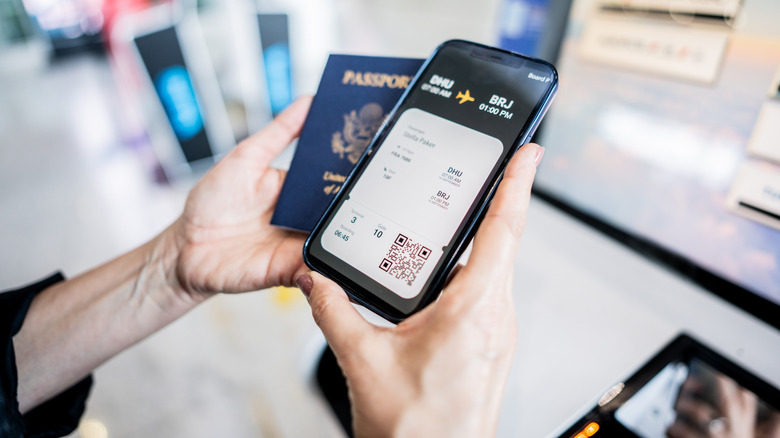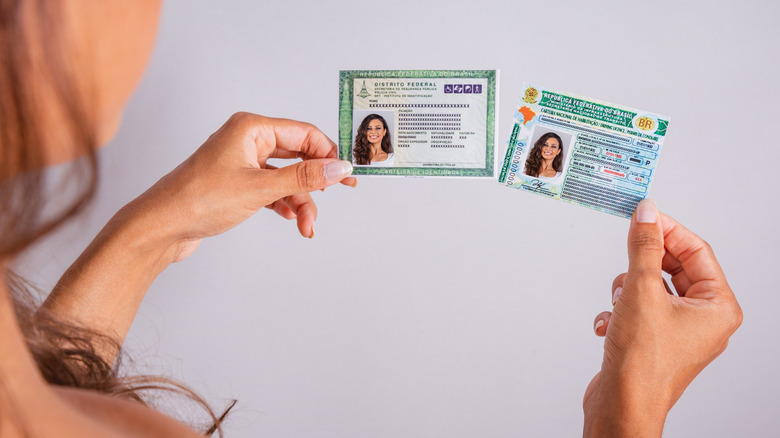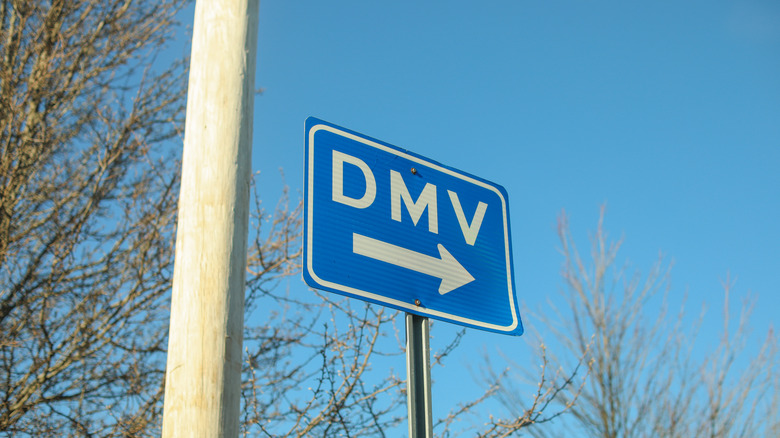Everything You Can Still Use To Board A Flight At A US Airport Instead Of A Real ID, Per Samantha Brown
As of May 7, 2025, all U.S. travelers must upgrade to a Real ID or a compatible alternative while traveling domestically. Travel expert Samantha Brown took to Instagram to go over a few documents you can fly with if you still haven't upgraded your driver's license. In her reel, Brown held up four different kinds of ID you can use to fly in the United States, sharing the information over the Rocky theme (perfectly titled "Gonna Fly Now"). Showing off just a few examples from TSA's approved list, she showed a passport, a passport card, a Global Entry card, and an enhanced license.
The Real ID Act was passed by Congress in 2005 and has finally become an enforced reality in all 50 states, 20 years later, as a step to increase security standards. Any driver's license that is not a Real ID is no longer a valid form of identification for domestic flights. While there's still time to get a Real ID, the rules will now be strictly enforced by TSA. It's a pain to travel with your passport if unnecessary, but as Samantha Brown has shown, there are several other options to consider instead.
Acceptable forms of ID to fly under the Real ID Act
TSA's website lists 16 acceptable alternatives for Real ID, many of which will not apply to the average traveler. Samantha Brown took to Instagram to share some of the most commonly used options. If you're a U.S. citizen, you can travel with a U.S. passport, U.S. passport card, or a state-issued enhanced driver's license (though these are only currently available in five states). It's important to note, there is a real difference between a passport and a passport card, and you should check which one you'll need when flying. With an enhanced driver's license, you can cross international borders by land or return to the U.S. through ports of entry from North America or the Caribbean. This is a great option if you plan to return to the United States from Mexico, Canada, or the Caribbean via car, ferry, or cruise ship, but it won't help you much at a foreign airport. In some states, TSA will also accept a digital ID instead of a driver's license.
If you're a permanent resident of the United States but not a citizen, you can provide a DHS Trusted Traveler card, like Global Entry, as another valid option for flying without a Real ID. While this is typically used for quick entrance to the U.S. from abroad, it's also considered a valid form of identification while traveling domestically. You will still need to show proof of residency if you're not a U.S. citizen. Other forms of identification that the TSA will accept include permanent resident cards, border crossing cards, Enhanced Tribal Cards, foreign passports, Veteran Health Identification Cards, and other niche options that only apply to a small subset of travelers.
How to get a Real ID
If you're not flying soon, it may be time to get your Real ID. While it may seem daunting and time-consuming, it will save you time and effort in the future. The process can be completed at approved DMVs across the country. While fees vary from state to state, in many states like New York, there is no additional cost to upgrade to a Real ID. Typically in other states, a new Real ID will cost around $30, but it could be more when you include renewal fees, with some states charging as much as $70.
To get a Real ID, you can make an appointment in advance or walk into a DMV near you. To save yourself time, make sure you have all of the required documentation for your state. Typically, this will include proof of your Social Security number, proof of address in the state you're applying, and proof of your full legal name and date of birth. Check with your state's DMV requirements to ensure you have the right combination of documents with you. With the right documents, the process will not be much different from renewing your license.


